- Home
- Ian Buruma
Year Zero Page 13
Year Zero Read online
Page 13
Harold Macmillan and Edmund Wilson came to Greece from very different perspectives, one as the British minister resident, the other as an American literary journalist, but on one thing they agreed. Greater efforts should have been made to split the democratic left from the communist revolutionaries. Macmillan thought that “a moderate, reasonable, progressive policy” could have peeled off “the vague, radical element from the hard, Communist core.”52 In Wilson’s view, England should have “helped the leaders of EAM to detach themselves from the Soviet entanglement and keep in order those wilder elements whose fierceness, in the days of the Resistance, the British had been only too glad to abet.”53 The pity is that any such efforts, even if the will had been there, were quickly smothered in a thirst for vengeance, encouraged by political forces seeking their advantage in stirring it up.
• • •
LIBERATION IS PERHAPS not the right word to describe the end of the war in colonial societies. Most Asians were more than happy to be rid of the Japanese, whose “Asian liberation” had turned out to be worse than the Western imperialism it temporarily replaced. But liberation is not quite what the Dutch had in mind for the Dutch East Indies in 1945, or the French for Indochina, or the British for Malaya.
American plans for the Philippines were more accommodating, and Lord Louis Mountbatten, Supreme Allied Commander in Southeast Asia, had some sympathy for Asian aspirations towards national independence. But the Dutch and the French wanted to restore the prewar colonial order as soon as possible. Even Dutch socialists, who were not unsympathetic to the Indonesian desire for independence, were afraid that the Dutch economy, badly damaged by the German occupation, would collapse without the Asian colonies. In the popular slogan of the time, “Disaster will be our cost, if the Indies are lost” (“Indië verloren, rampspoed geboren”). The most the relatively progressive Dutch government would concede to the Indonesian nationalists was a degree of autonomy under the Dutch crown. And there could be no truck with Indonesians who worked with the Japanese.
This made the question of collaboration and revenge rather complicated, for there had been considerable enthusiasm among Southeast Asians, at least in the early years of the war, for the Japanese propaganda of “Asia for the Asians.” To activists such as Sukarno in Indonesia, working with the Japanese was the best way to get rid of the Dutch colonial masters. But in Dutch eyes, this made Sukarno a collaborator with the enemy. There was no question of negotiating Indonesian independence with him after the war; on the contrary, the Dutch were convinced that he should be punished as a traitor.
Asians, too, were consumed by a rage for vengeance in 1945, but this was not always directed at the European colonialists. Vengeance was often more indirect, aimed at other forms of collaboration that preceded the Japanese occupation. As was the case in parts of Europe, the victims of Asian vengeance were often unpopular minorities, especially if they were thought to be privileged, richer, and in league with the Western colonial powers.
The Chinese, often called “the Jews of Asia,” took the brunt of Japanese ferocity in Southeast Asia. In Malaya, for example, the Malays were preferred to the Chinese, whom the Japanese distrusted. Chinese merchants benefited from Western colonialism, or so it was thought. And so the Chinese had to be crushed, while the Malay elites were promoted in the civil service and the police. Not that Malay or Indonesian peasants and workers were necessarily well treated; Indonesians forced to work on Japanese military projects died in huge numbers in even more miserable circumstances than most Western POWs. The countryside was often ravaged, leaving millions of peasants destitute; the cities were plundered, deprived of minimal services, the streets ruled by criminal gangs.
Japanese rule in Southeast Asia was brutal, and yet a new assertive spirit had seeped into people who had tended to adopt an attitude of surly colonial submission before. Western powers had been humbled by Japan and shown to be vulnerable. Hundreds of thousands of young Malays and Indonesians were trained by the Japanese as soldiers in auxiliary forces, militias, and various militant youth organizations. This gave them a quite unaccustomed sense of pride. Exploiting the common sense of humiliation and inferiority among colonized peoples, the Japanese deliberately stirred up anti-Western, as well as anti-Chinese, feeling.
Much of the anti-Japanese resistance in Malaya during the war came from the Chinese. Inspired by the Communist Party in China, but also perhaps by the internationalism that made communism attractive to minorities elsewhere, resistance was led by the Malayan Communist Party. Although the MCP was not particularly anti-Malay, almost all its members were Chinese. Its military arm was the Malayan People’s Anti-Japanese Army (MPAJA) which, in August 1945, had about ten thousand men under arms who controlled much of the countryside, forming a state within a state, with its own rules and laws and given to widespread purges of unsympathetic officials, rather like the communist guerrillas in Greece.
After the war, revenge was swiftly taken by members of the Anti-Japanese Army on local collaborators with the Japanese, most of whom were Indians and Malays; mayors, policemen, journalists, informers, former mistresses of Japanese officials, and other “traitors and running dogs” were dragged through the streets, displayed in cages, summarily tried in “people’s courts,” and publicly executed. This put the fear into many Malays. And when the British colonial government, which had worked closely with the MPAJA against the Japanese, decided in October that Chinese should be granted equal citizenship, Malays, understandably, were frightened of losing control over their own country, a fear that has been exploited by Malay politicians to this day.
Malays decided to strike back at the Chinese. The leading figure was a fierce-looking former gangster boss in a turban, named Kiyai Salleh. He emerged after the war as the chieftain of a group named the Red Bands of the Sabilillah (Holy War). Their goal was to protect the Muslim faith against Chinese heathens and to avenge the Malays whom the Chinese had humiliated and killed after the Japanese defeat. Although the jihad against the Chinese was ostensibly Islamic—Koranic texts were read, Sufi saints invoked—Salleh modeled himself after Malay mystics, claiming to be invulnerable to harm: “He cannot be killed by bullets; he can walk dry-shod across rivers; he can burst any bonds that are put on him; his voice can paralyze his assailants.”54 His followers believed that they were blessed with similar powers, after pricking themselves with golden needles and drinking potions blessed by the holy warrior chief.
The Red Bands’ favorite method of killing was by machete, or the Malay dagger called kris, a weapon imbued, like the warriors themselves, with mystical powers. In one typical incident, on November 6, a band of Malay jihadis swooped down on a Chinese village at Padang Lebar and hacked five men and thirty-five women and children to death with their daggers and machetes. The corpses of the children were thrown down a well. Malay politicians did not exactly support this kind of thing, but they did little to stop it. According to a British military intelligence report, “there appears to be an appreciable concern among educated Malays regarding the future status of Malays in Malaya and there is a fairly widespread belief that the Chinese are securing an economic grip of the country, which, if unchecked, may eventually lead to political control.”55
This same fear haunted Indonesians, so it was not by chance that the Malay chieftain’s three main lieutenants were Indonesian nationalists from the Dutch East Indies, where the situation in the autumn of 1945 was a good deal worse than in Malaya.
G. F. Jacobs, a South African major in His Majesty’s Royal Marines, was one of the first Allied soldiers to be parachuted into Sumatra in August 1945. His task was to establish contact with the Japanese military authorities and prepare the way for their surrender and Allied troops to land. Jacobs was also one of the first to see the state of Japanese POW camps holding thousands of diseased, emaciated, beaten, and starved civilians. Dutch prisoners couldn’t understand why Jacobs would not let them exact rough justice: “Why did you stop
us . . . can’t you see we want to fix these little yellow bastards?”56
The reason why Major Jacobs had to stop the POWs from lynching their guards was his fear of a far greater threat. Indonesians were roaming the country with guns, daggers, and pointed spears, screaming “bunuh Belanda!,” “Death to the white man!” Japanese were needed to guard their former prisoners.
On the morning of August 17, two days after the Japanese surrender, Sukarno read a short, typed declaration to a smallish crowd in Batavia (Jakarta): “We the people of Indonesia hereby declare the independence of Indonesia. Matters concerning the transfer of power etc., will be carried out in a conscientious manner and as speedily as possible.”
The declaration had been drafted by Sukarno, self-appointed president of the new Republic of Indonesia, and his vice president, Mohammed Hatta, in close consultation with the Japanese army and navy commanders. When defeat looked inevitable in the summer of 1945, the Japanese decided that an independent, anti-Western Indonesia would be their best option. Most Japanese, after all, took the slogan “Asia for the Asians” seriously, even if they had hoped to rule over other Asians as the superior race. Many Indonesians, tired of violence, brutalized by the Japanese, hungry and vulnerable to diseases brought back by survivors of forced labor on the Thailand–Burma Railway and other hellish Japanese projects, were not sure yet what to think. There was little hostility to Dutch civilians in the first weeks after the Japanese surrender. Sukarno, Hatta, and other leaders such as Sutan Syahrir, a Dutch-educated socialist who had never cooperated with the Japanese, did their best to contain potential violence in an archipelago over which they did not yet have much control.
The new Indonesian leaders certainly had little sway over the large numbers of young toughs, who had been radicalized and trained as auxiliaries in the Japanese army. These boys were in a mood to fight. Weapons were acquired from sympathetic Japanese officers, sometimes bought, sometimes stolen from Japanese depots. In one estimate, the fighters obtained more than fifty thousand rifles, three thousand light and heavy machine guns, and a hundred million rounds of ammunition.57 What the Dutch should have done, and were encouraged to do by their Western allies, was to negotiate with Sukarno and the other Indonesian leaders who had no interest in revolutionary violence. In Mountbatten’s wishful words: “Our only idea is to get the Dutch and the Indonesians to kiss and make friends and then pull out.”58 Instead, the Dutch petitioned the British Foreign Office, comparing the “so-called Sukarno government” to the pro-Nazi Quisling regime, and the young Indonesian fighters for independence to the Hitler Youth and the SS. Sukarno’s proclamation of independence was portrayed as a Japanese plot to continue a fascist regime in the Dutch East Indies.59
About Sukarno’s collaboration with the Japanese there can be no doubt. He had spent much of the 1930s in Dutch colonial prisons, or in exile on a remote island. The Japanese had treated him with more respect than the Dutch had done. It was in any case not unreasonable for Sukarno to see Japan as the quickest route to national liberation. “For the first time in all my life,” he said, in 1942, “I saw myself in the mirror of Asia.”60
But Sukarno’s collaboration went too far even for many Indonesians. His support of Indonesian forced labor for the Japanese war effort tarnished his reputation, and the young radicals were angry that he had involved the Japanese in the declaration of independence. They wanted nothing to do with the Japanese. But no one disputed Sukarno’s credentials as an Indonesian nationalist.
Rather than deal directly with Sukarno, however, the Dutch issued vague promises of Indonesian autonomy in a Dutch-led commonwealth. Meanwhile, starting in September, veterans of the Dutch East Indies Army swaggered around Indonesian villages and neighborhoods, shooting their guns, tearing down red and white Indonesian flags, and threatening people, all in the way of showing who was boss. The most notorious vigilantes were a group called Battalion X, led by Dutch and Eurasian commanders, but mostly manned by dark-skinned Ambonese Christians, Medanese, and other minorities, who were more afraid of being dominated by other Indonesians than by the Dutch, and who had been loyal servants of the colonial system. When news came of the arrival of Dutch and British battleships carrying Allied troops, mostly Indians, and agents of the Netherlands Indies Civil Administration (NICA), bent on restoring the old order, the scene was set for the bloodiest violence in Southeast Asia, violence that was part revolution, part vengeance, and part criminality, the same lethal brew that exploded in central Europe earlier in the year.
The bands of armed extremists that unleashed the wave of terror in October and November 1945, a wave known as bersiap (“Get ready!”), consisted mostly of former members of Japanese-led militias and street toughs, often teenagers recruited from gangs in Jakarta, Surabaya, or other cities. But the youth groups, or pemuda, also included students, factory workers, and villagers. Some of their leaders were gangster bosses, whose reasons for robbing and killing the rich and powerful had less to do with politics than with greed. Some were charismatic figures, such as the bandit chief named Father Tiger, who sold amulets to his men for invulnerability. The mixture of Javanese mysticism and Japanese indoctrination about the warrior spirit imbued young fighters with a reckless sense of heroism: “Merdeka atan mati!” (“Freedom or death!”). There were instances of youths battling tanks with nothing but machetes and bamboo spears.
The main victims of revolutionary vengeance were the Chinese, associated with business and suspected of treachery, and the Eurasians, or “Indos,” as well as other minorities who had often sided with the Dutch. Then there were those often imaginary creatures called NICA spies. The definition of a NICA spy could be quite arbitrary; a person with too much red, white, and blue (the Dutch national colors) in his sarong could be picked up as an agent for the Dutch administration.
Chinese, Indos, or Ambonese knew trouble was coming when they heard the sound of bamboo spears being banged like drums of war against the hollow metal lampposts of Jakarta. The armed Japanese soldiers who were ordered to protect civilians in the absence of Allied troops often slunk away when the banging started. Shops were raided and houses set on fire. The families inside were hacked to death by frenzied youths, drunk with violence, literally in love with their daggers, and sometimes given to drinking the blood of their victims. In one area near Jakarta, there was no more fresh water, because the wells had been stuffed solid with putrefying Chinese corpses.
The Indo-Dutch phrase for the most common kind of killing was getjintjangd. Tjintjang meant slashing a person with a kris or machete. Dutch civilians, foolish enough to leave the camps still guarded by Japanese, were frequently tjintjanged, as were Japanese soldiers who resisted demands to help the rebels or hand over their weapons. Even though the old concentration camps, huge squalid villages full of sick and hungry people, were also targeted for attack, they were still the safest places to be, as long as the Japanese guards stayed at their posts.
One young man, named Peter van Berkum, born in Indonesia like many Dutch civilians, was picked up at random one night in Surabaya by a group of wild teenagers with sharpened bamboo spears. He was taken by truck to a local prison: “As the truck slowed it was surrounded by this mass of screaming people. I saw only a blur of brown, sweaty faces with contorted, wide-open mouths. They were shaking clenched fists and brandishing all sorts of weapons.” Amidst screams of “Death to the whites!” the prisoners were pushed out of the truck. “Immediately the crowd started in on them, beating, hacking, stabbing with sticks and bayonets, using axes, rifle-butts, and spears.”61
Bersiap, never wished for by the Indonesian leaders, was now utterly beyond their control. Battles broke out all over Java and Sumatra, not just acts of vengeance against colonials and their alleged helpers, but between rebels and Japanese as well, in a bloody cycle of revenge and retaliation. In Semarang, a Japanese unit led by Major Kido Shinichiro clashed with pemuda, who believed the Japanese were sabotaging the water supply. The
Japanese, in a brutal form of intimidation, killed a number of Indonesian militants. Indonesians then murdered more than two hundred Japanese civilians locked up in the city jail. A British army report noted: “Some corpses were hanging from the roof and from the windows, others had been pierced through and through with bamboo spears . . . Some had tried to write last messages in blood on the walls.”62 More than two thousand Indonesians were butchered in retaliation by the enraged Japanese.
The worst violence engulfed the industrial city of Surabaya, which was entirely in the hands of the Indonesians by the end of October. The jails had been emptied. Crowds of pemuda freedom fighters, petty mobsters, and romantic youths fired up by tales of traditional Javanese derring-do broadcast on “Radio Rebellion” by a charismatic long-haired figure known as Brother Tomo, ruled the streets. Chinese, Ambonese, and Indos, accused of being NICA spies, were assaulted with daggers and spears. And the Japanese, worried about their own lives, happily supplied the mobs with more lethal arms.
Peter van Berkum’s sister, Carla, arrived with other Dutch refugees from a nearby concentration camp: “We were stormed by a mob of natives. They stuck their bamboo spears at us aggressively. And they kept screaming: merdeka! merdeka! merdeka! [freedom]. They were dressed in rags. Their dark eyes had a terrifying look. I was scared.”63

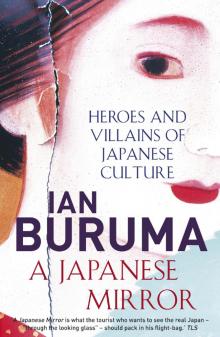 A Japanese Mirror
A Japanese Mirror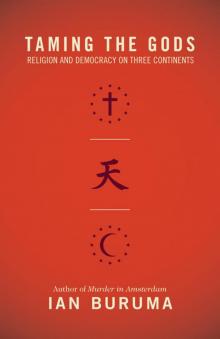 Taming the Gods
Taming the Gods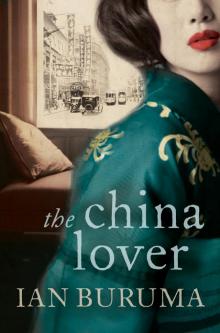 The China Lover
The China Lover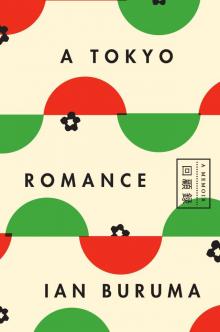 A Tokyo Romance
A Tokyo Romance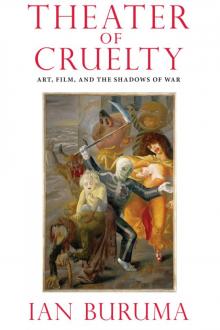 Theater of Cruelty
Theater of Cruelty Year Zero
Year Zero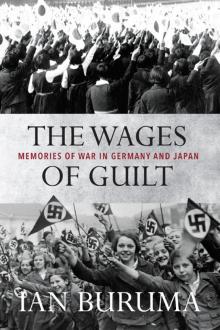 The Wages of Guilt
The Wages of Guilt Murder in Amsterdam
Murder in Amsterdam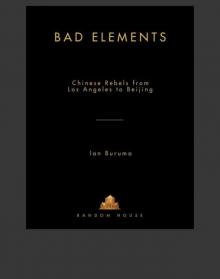 Bad Elements
Bad Elements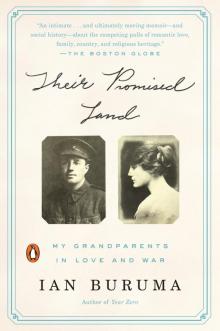 Their Promised Land
Their Promised Land Occidentalism
Occidentalism Anglomania
Anglomania Inventing Japan: 1853-1964 (Modern Library Chronicles)
Inventing Japan: 1853-1964 (Modern Library Chronicles) The Missionary and the Libertine
The Missionary and the Libertine